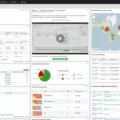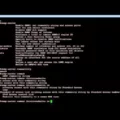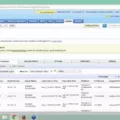Network device management is an essential part of running a successful and reliable network. With the ever-changing world of technology, it’s important to make sure your network is up-to-date, secure, and optimized for performance. Network Configuration Manager (NCM) is an invaluable tool that provides you with the ability to manage your network devices in a comprehensive way.
One of the key components of NCM is fault management – this allows you to identify and address any issues with your network devices before they can become serious problems. From pinpointing hardware failures to resolving software bugs, NCM handles it all. Additionally, NCM has powerful configuration management capabilities that let you create backup copies of each device’s settings, allowing you to quickly restore them if needed.
Accounting management is also an important feature of NCM – it helps you keep track of how much data each device consumes over time. This allows you to plan for future usage and allocate resources accordingly. Performance management lets you monitor and measure the performance of each device in real-time, so you can identify potential bottlenecks and take action to resolve them promptly. Finally, security management ensures that all devices are properly protected from malicious actors by regularly checking for vulnerabilities and proactively patching any weaknesses that are discovered.
NCM makes network device management simple and efficient – no matter what size or type of network you have in place, there’s a solution available to meet your requirements. Subscriptions start at just $195 per year per concurrent user/per subscription – volume discounts apply for 5+ subscriptions – so it’s easy to get started with NCM today!
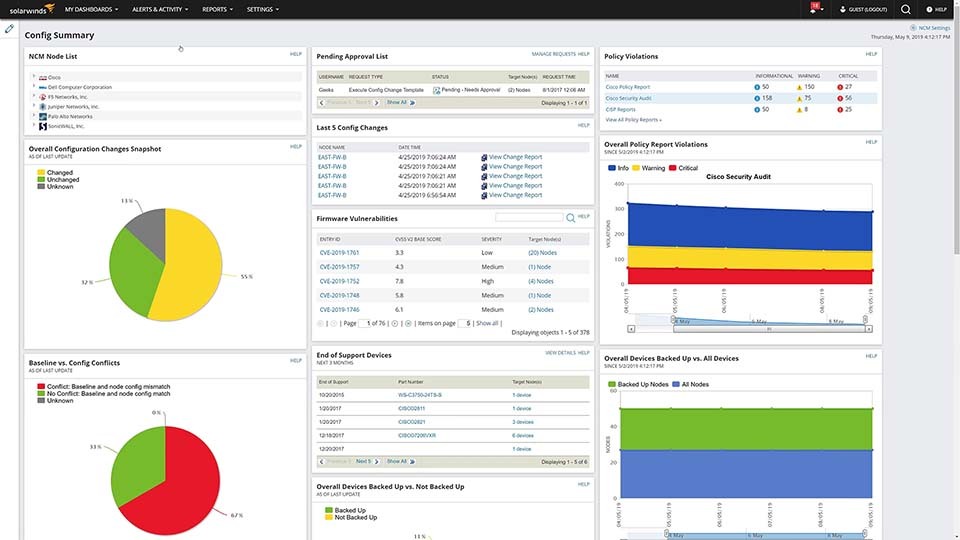
Types of Network Management
Network management consists of five core operational areas: Fault Management, Configuration Management, Accounting Management, Performance Management, and Security Management.
Fault Management is the process of identifying and resolving problems that occur in a network. This includes monitoring network components, identifying any issues that arise, and taking corrective action to resolve them.
Configuration Management is the process of managing the configuration of a network’s hardware, software, and services. This includes making changes to existing configurations as well as deploying new ones.
Accounting Management is responsible for tracking resources used by the network such as bandwidth, storage space, and applications. This helps ensure resources are being used efficiently and cost-effectively.
Performance Management is used to measure the performance of a network’s components. This includes monitoring bandwidth utilization, latency levels, and throughput rates to ensure optimal performance levels are maintained.
Security Management is responsible for ensuring the security of a network by monitoring for potential threats and attacks from outside sources. This includes setting up firewalls, implementing access control systems, encrypting data transmissions, and applying security patches as needed.
The Use of Network Configuration Management (NCM)
Network Configuration Manager (NCM) is a powerful tool used to ensure the reliability and security of your network devices. NCM enables you to track, manage, and audit all of the configuration changes that occur in your network. It helps you keep on top of any changes made to routers, switches, and other network devices from Cisco®, Juniper®, HP®, Dell®, Brocade®, F5® Aruba®, Rukus® and more. NCM allows you to save time by automating the deployment of configurations across multiple devices, as well as preventing misconfigurations or unauthorized changes from occurring. Additionally, it can display detailed reports on all configuration changes and alert you when there are any non-compliant or out-of-date configurations on your network. With NCM’s help, you can be sure that your networks remain reliable and secure.
Understanding NCM in Telecom
Network Configuration Management (NCM) in telecom is the process of managing and maintaining the configuration of telecom networks to ensure that they are efficient, secure, and cost-effective. This includes tasks such as configuring devices, monitoring performance, identifying potential issues, updating software or firmware, and making changes to settings or configurations. NCM also ensures that all network components are meeting the requirements for security, compliance, and reliability. By using NCM in telecom networks, service providers can provide their customers with better quality of service at lower costs.
Cost of NCM
NCM subscriptions are available for $195.00 for the first year and $145.00 per year thereafter, per concurrent user/per subscription. This price is applicable to both new NCM and PNCM subscriptions. If you are interested in purchasing 5 or more subscriptions, volume discounts may be available.
Four Areas of Network Management
Network management involves the use of four distinct areas to ensure the efficient and effective operation of a network system. These areas are Fault Management, Configuration Management, Performance Management, and Security Management.
Fault Management is responsible for identifying and resolving any errors that may occur in the system. This is done by using specialized software to detect and manage any potential faults.
Configuration Management is used to monitor and maintain all devices and network configurations. This includes making sure all devices are up-to-date with their security patches, as well as configuring them to work together optimally for the best performance.
Performance Management is concerned with monitoring the performance of the network system, such as its speed and latency so that any issues can be addressed quickly. This can involve using specialized software to analyze traffic flows or diagnosing hardware problems.
Finally, Security Management is responsible for keeping the system secure from external threats. This includes implementing firewalls, antivirus software, and encryption protocols, patching systems regularly, and conducting regular security audits.
Examples of Network Management
Network management is the process of managing and maintaining a network infrastructure, including all of its components, such as routers, switches, servers, and other devices. This typically involves configuring and optimizing the network so that it runs smoothly and efficiently. Network managers may also be responsible for troubleshooting any issues that arise with the network or its components. Examples of specific tasks that may be involved in network management include setting up new devices on the network, configuring security settings, monitoring performance metrics such as latency and throughput, updating firmware or software on network devices, installing patches or upgrades to improve security or performance of the network, responding to outages or errors, and providing technical support to users.
Understanding NCM in Cyber Security
Network Configuration Management (NCM) is a vital component of cyber security. It is the process of organizing, monitoring, and maintaining all the settings and configurations of a computer network. NCM ensures that the network is properly configured to meet its intended purpose, while also preventing unauthorized changes or access to sensitive data. NCM helps protect networks from malicious actors by ensuring only authorized systems and users have access to important information stored in the network. It also helps organizations maintain compliance with applicable security standards and regulations. By regularly auditing network configurations, NCM helps to detect and prevent potential vulnerabilities before they can be exploited by malicious actors or adversaries.
Types of NCM
There are three types of NCM actions: Backup Running Config, Execute Config Script and Show Last Config Changes. Backup Running Config allows you to create a backup of the current running configuration of your network devices. Execute Config Script enables you to execute predefined scripts on the devices that are managed by NCM. Show Last Config Changes provides a detailed report of the differences between the current running configuration and the last known good configuration.
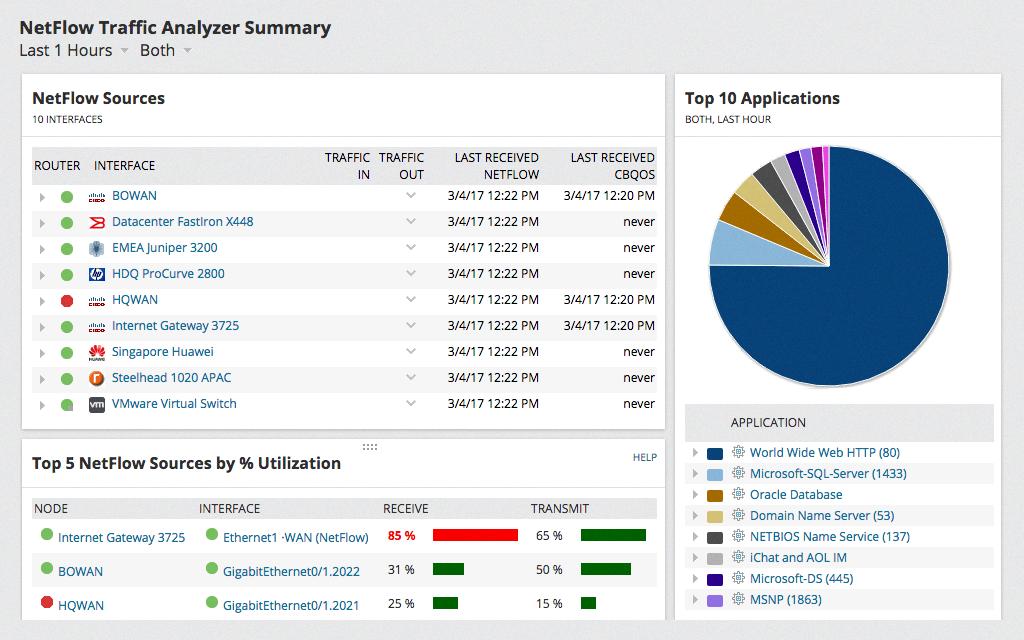
Source: solarwinds.com
The Benefits of Using NPM and NCM
SolarWinds Network Performance Manager (NPM) is a comprehensive network monitoring solution that helps you analyze, troubleshoot, and optimize the performance of your networks. With NPM, you can monitor the performance of your entire network infrastructure—including routers, switches, servers, and firewalls—in real-time. You can also use NPM to quickly identify and resolve problem areas in your networks and ensure high availability.
SolarWinds Network Configuration Manager (NCM) is an automated network configuration management solution that helps IT administrators manage, audit, and report on changes to their network devices. It provides visibility into configuration changes across multiple devices, enabling administrators to identify and address policy violations before they become problems. NCM can also help ensure compliance with industry standards such as PCI DSS and HIPAA by providing detailed reports on network device configurations.
Setting Up Network Configuration Management (NCM)
Setting up NCM is a straightforward process that allows you to quickly and easily manage your network devices.
The first step is to discover the network devices on your network and add them to the SolarWinds platform for monitoring. You can do this either manually or by using an automated script.
Once the devices are added, you can back up their configurations either manually or automatically with a script. This will save all of the device’s configuration information to the SolarWinds platform, ensuring that you have access to it even if something happens to the device itself.
Finally, you can view all of your device configurations on the Config Summary dashboard, and use NCM’s powerful change management features to keep track of any changes made to the network over time.
With these simple steps, you’ll be able to easily set up and manage NCM for your network devices.
Conclusion
In conclusion, managing a computer network is an important task that requires the use of several elements, such as fault management, configuration management, accounting management, performance management, and security management. Network Configuration Manager (NCM) helps to streamline the process and reduce time spent on maintenance, modification, repair, and general monitoring tasks. Subscriptions for NCM or PNCM are available for purchase at an affordable price and volume discounts are offered for customers who wish to purchase multiple subscriptions. Overall, investing in a reliable network device manager can help increase efficiency and improve the reliability and security of your computer networks.

